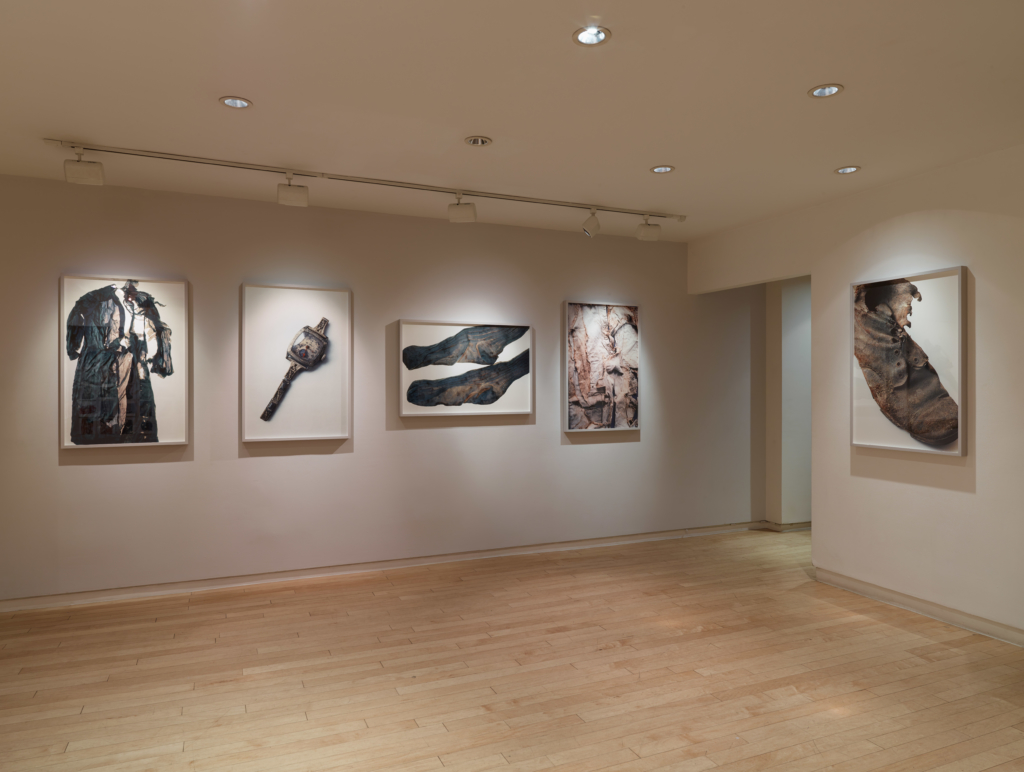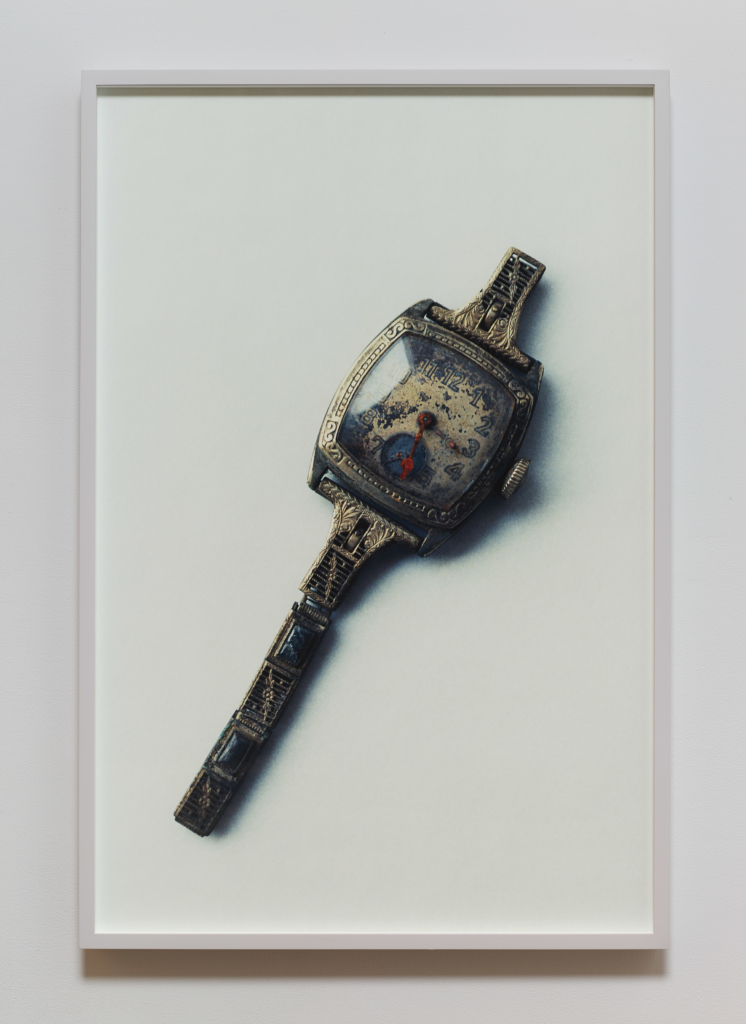Ishiuchi Miyako
Here and Now: Atomic Bomb Artifacts, ひろしま/Hiroshima 1945/2007—
September 18 – November 21, 2014
Andrew Roth is honored to present the third one-person exhibition at the gallery with Ishiuchi Miyako, the 2014 recipient of the Hasselblad Award for her lifetime achievement in Photographic Art.
Born in Japan in 1947, Ishiuchi Miyako hadn’t visited Hiroshima until 2007, when she accepted a commission from Yamamoto Junji, the editor of Shuiesha publishing company, to photograph artifacts from the Hiroshima Peace Memorial Museum for a monograph. Published in 2008, Hiroshima presents 61 color photographs created by placing the artifacts — clothing and personal effects that were deposited in the archive by members of the victims’ families — on a light box, illuminating the weave of the garments and enhancing the objects in an aura of light. The small book fits comfortably into the palm of your hand and has the seductive look of a promotional brochure printed by a fashion house, disguising the fact it presents remains of the dead.
“Here and Now: Atomic Bomb Artifacts, ひろしま/Hiroshima 1945/2007-” is the title of a limited-edition book published by PPP Editions and an exhibition featuring a selection of color enlargements. Since 2007, Ishiuchi has returned each year to Hiroshima to photograph more artifacts selected from the collection of over 19,000 items; she has chosen to focus on those that had direct contact with the body of a victim. After the first year photographing on a light box, she now photographs exclusively with natural light. This is an ongoing project.
“Here and Now” embodies motifs inherent in Ishiuchi’s earlier work. Beginning her art-school education majoring in textile design, she quickly found her footing with black-and-white photography, producing her first three critical bodies of work in the mid-1970s: Yokosuka Story, Apartment, and Endless Nights, all featuring photographs made in her hometown Yokosuka. The act of photographing for her has been largely autobiographical, a way to decipher her feelings about her past. In 1987. she produced 1-9-4-7, black-and-white photographs of feet and hands of men and women who were born the same year she was. In 1990, she began the series Scars, details of scars on the skin, the trace left from a wound. Mother’s, exhibited in 2005 at the Japanese Pavilion for the 51st Venice Biennale, featured color photographs of the intimate apparel and accessories left behind by Ishiuchi’s mother, describing the life that wore and handled them. Making these pictures shortly after her mother’s death was a way for Ishiuchi to mourn her loss and to connect more intimately with her memory.
Here and Now: Atomic Bomb Artifacts, ひろしま/Hiroshima 1945/2007- published by PPP Editions is printed in a limited edition of 100 signed and numbered copies. It prints 214 photographs, the most complete suite of images from Ishiuchi’s archive to date. The book presents not only those finished works that have been enlarged for exhibition but uncovers the process Ishiuchi employs in making her photographs, a kind of interrogation of the subject, zooming in on details, moving around the item, shooting from different angles. Again, here, Ishiuchi is using photography to explore the deeper meaning in her subject, to understand not only who might have worn or had contact with the artifacts but what they mean today at this moment in time.
Ishiuchi’s Hiroshima photographs have been widely exhibited in Japan, including hiroshima in OKINAWA at Sakima Art Museum, Okinawa, in 2010. In North America, they were first exhibited at the Audain Gallery, UBC Museum of Anthropology in 2011. However, “Here and Now” is the first gallery exhibition in the U.S. The Getty Museum will open a retrospective of her photographs in 2015. Her works are in important private and public collections including SF MoMA, MFA Houston, MoMA, the Metropolitan Museum of Art, Tokyo Metropolitan Museum of Photography, the Art Institute of Chicago, the Getty Museum, and Tate Modern.
The New Yorker Review
The New York Times Review












